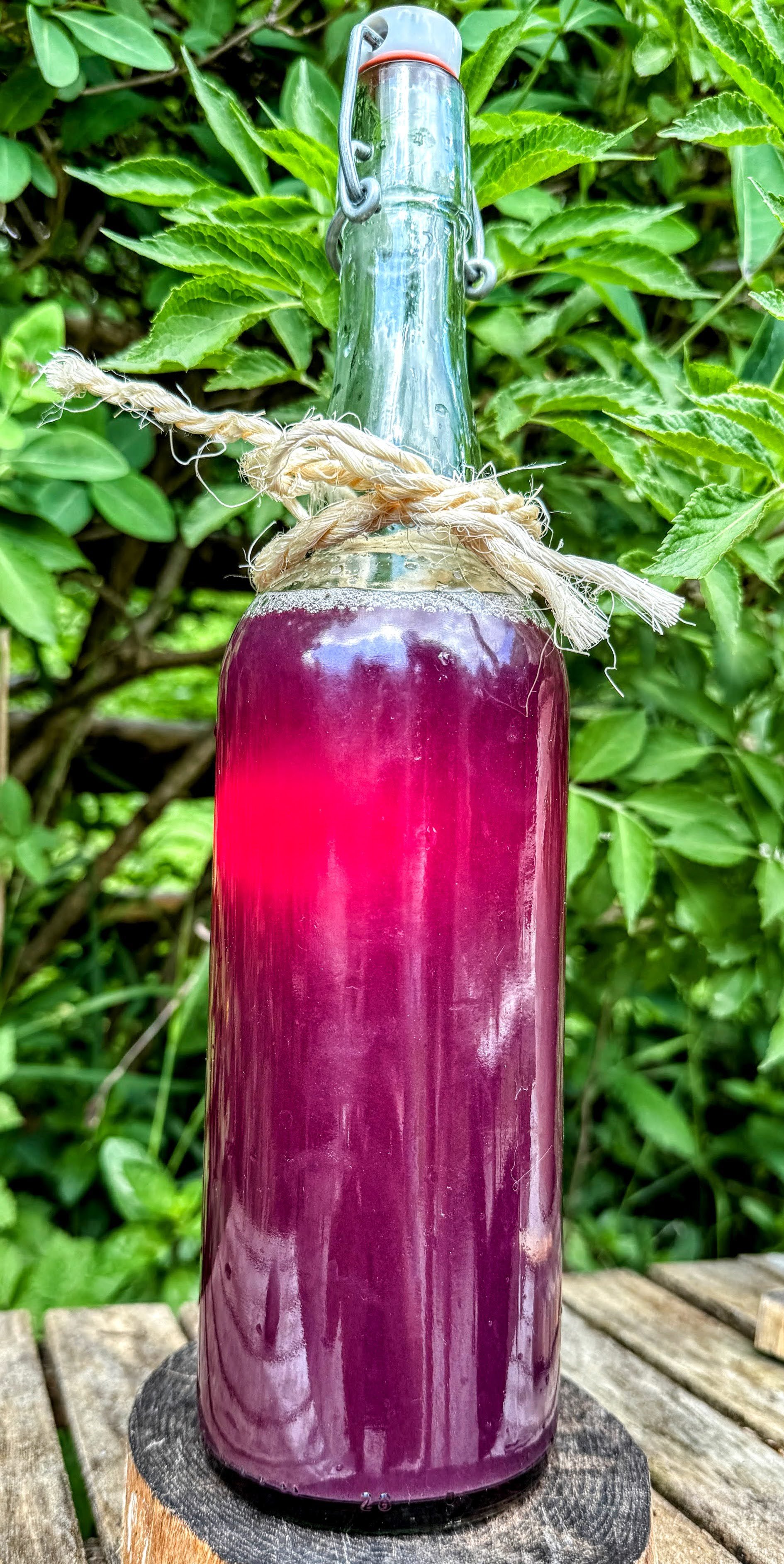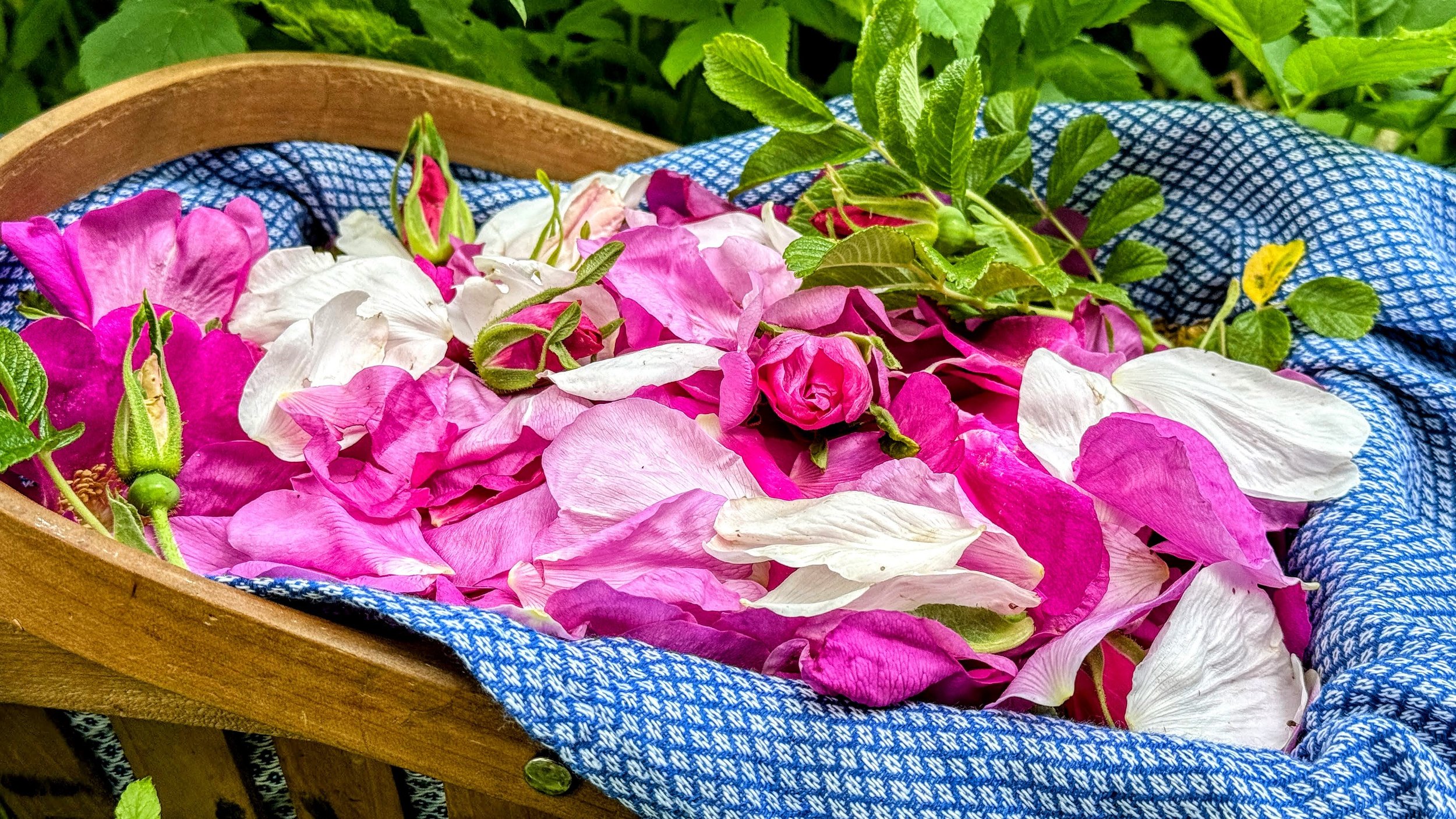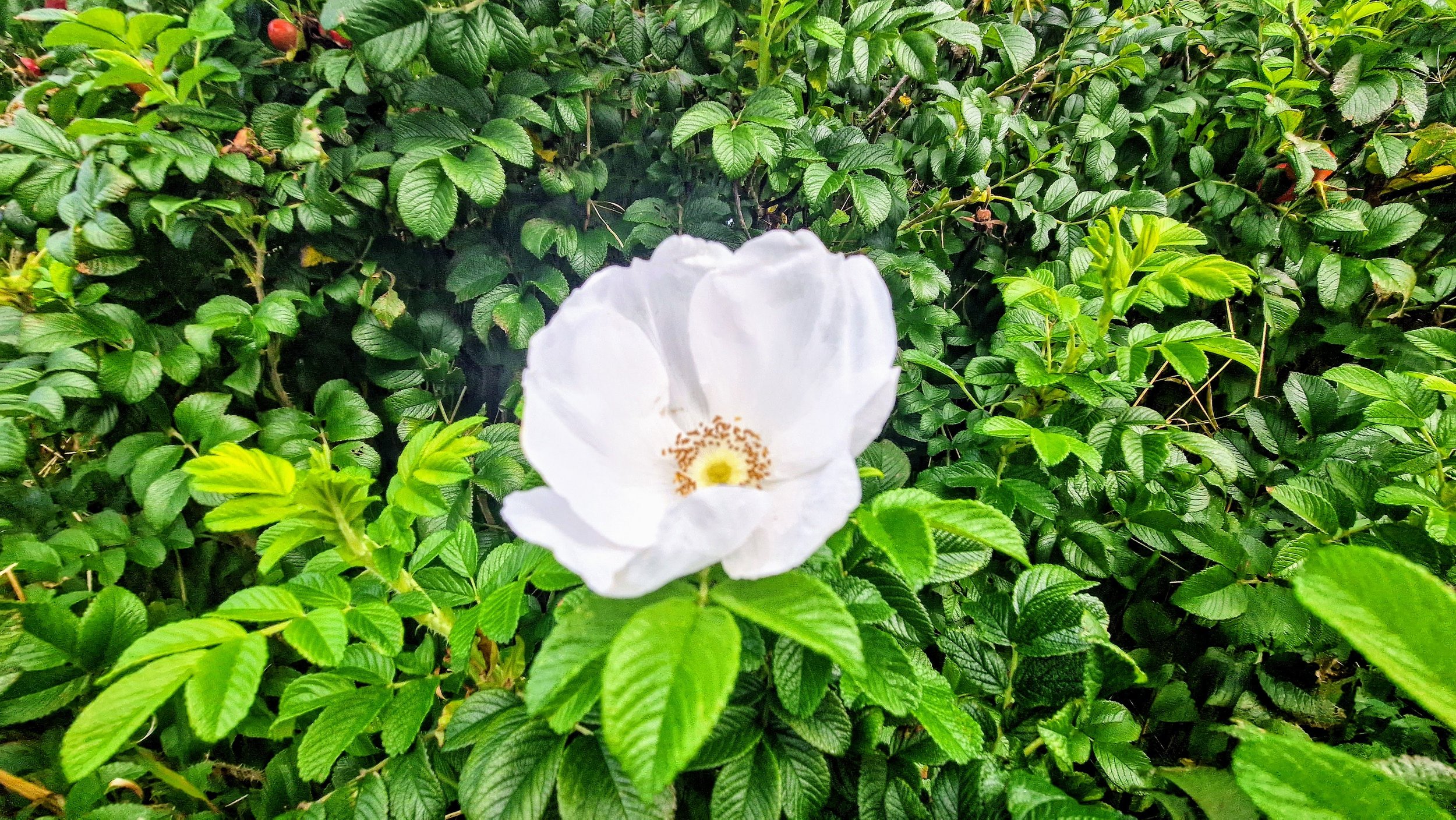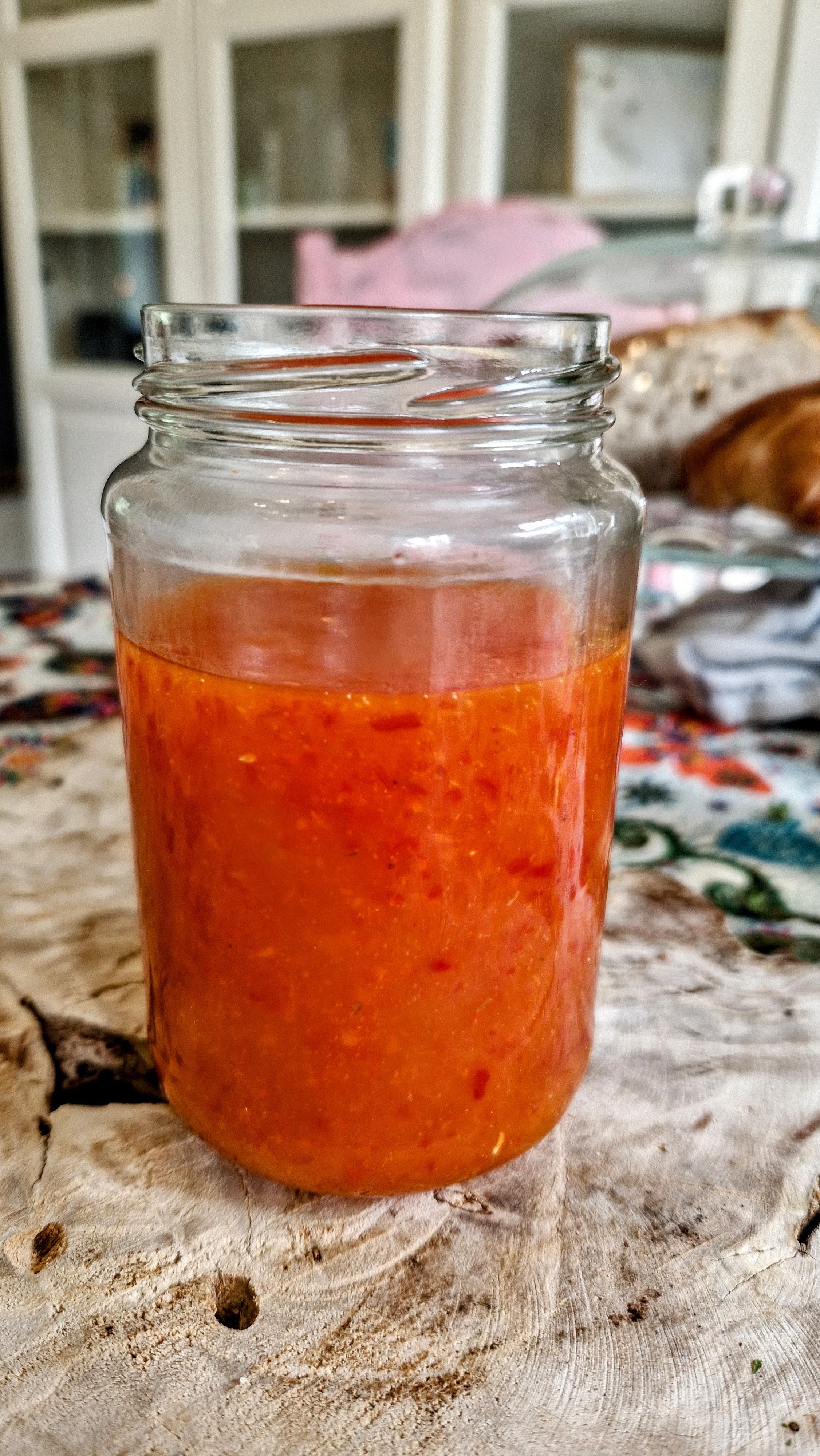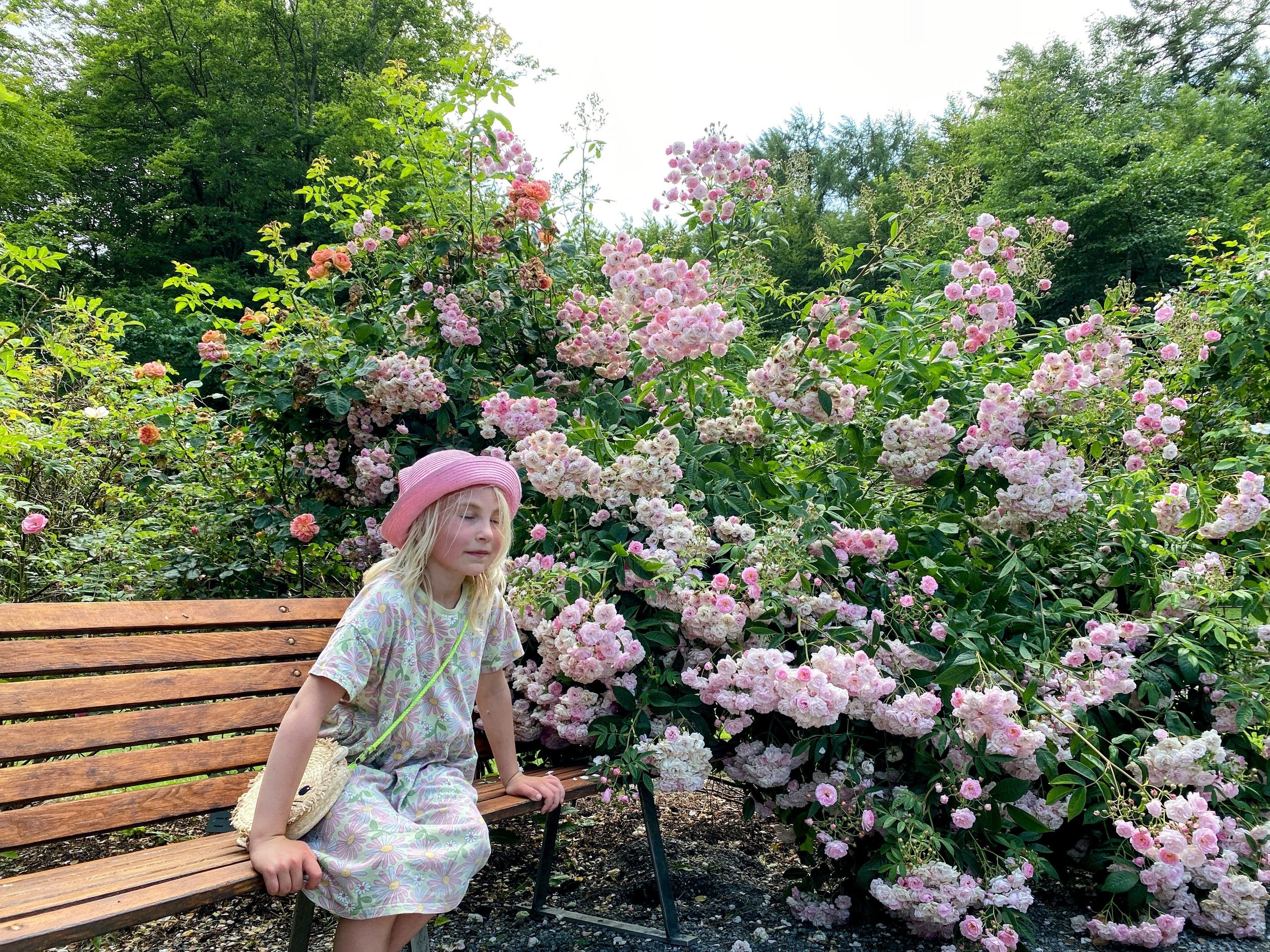Basketful of Blossoms: Foraging Wild Spring Roses
As the gentle warmth of late spring unfurls across Scandinavia, our foraging journeys take a delightful turn towards gathering the vibrant and aromatic wild roses that dot our landscape. Known locally as the wrinkly rose, vresros or hyben, this species, originally introduced by an assistant of the famed botanist Carl Von Linné, Peter Thunberg, has flourished into an abundant, albeit invasive, guest in our natural gardens. This proliferation makes our foraging excursions not only enjoyable but also ecologically beneficial as we help manage their spread.
Our wild rose forays are timed to capture the flowers at their aromatic peak. Unlike the cultivated varieties many are accustomed to, these wild roses display a rustic charm with their range of colors from lilac and magenta to delicate pink and pure white. Regardless of the hue, each petal exudes a potent, sweetly citrusy fragrance that is almost intoxicating, with the petals feeling slightly sticky from the heavy pollen they bear.
When harvesting, we gently tug the petals from the stems, careful to leave the rest of the plant undisturbed. We also collect some of the younger, immature blossoms, intrigued by the subtle variations in flavor and scent that occur throughout their blooming period.
For transportation, we use a sturdy basket lined with a tea towel, a precaution that proves handy when the spring breezes begin to stir. Should the wind pick up, a quick fold of the towel over the basket’s top keeps our precious cargo safe from the elements.
Back home, these wild rose petals find their way into various culinary and aromatic preparations. From infusing homemade cordials and teas to enhancing desserts or simply being dried for later use, each petal carries the essence of Scandinavian springtime.


















